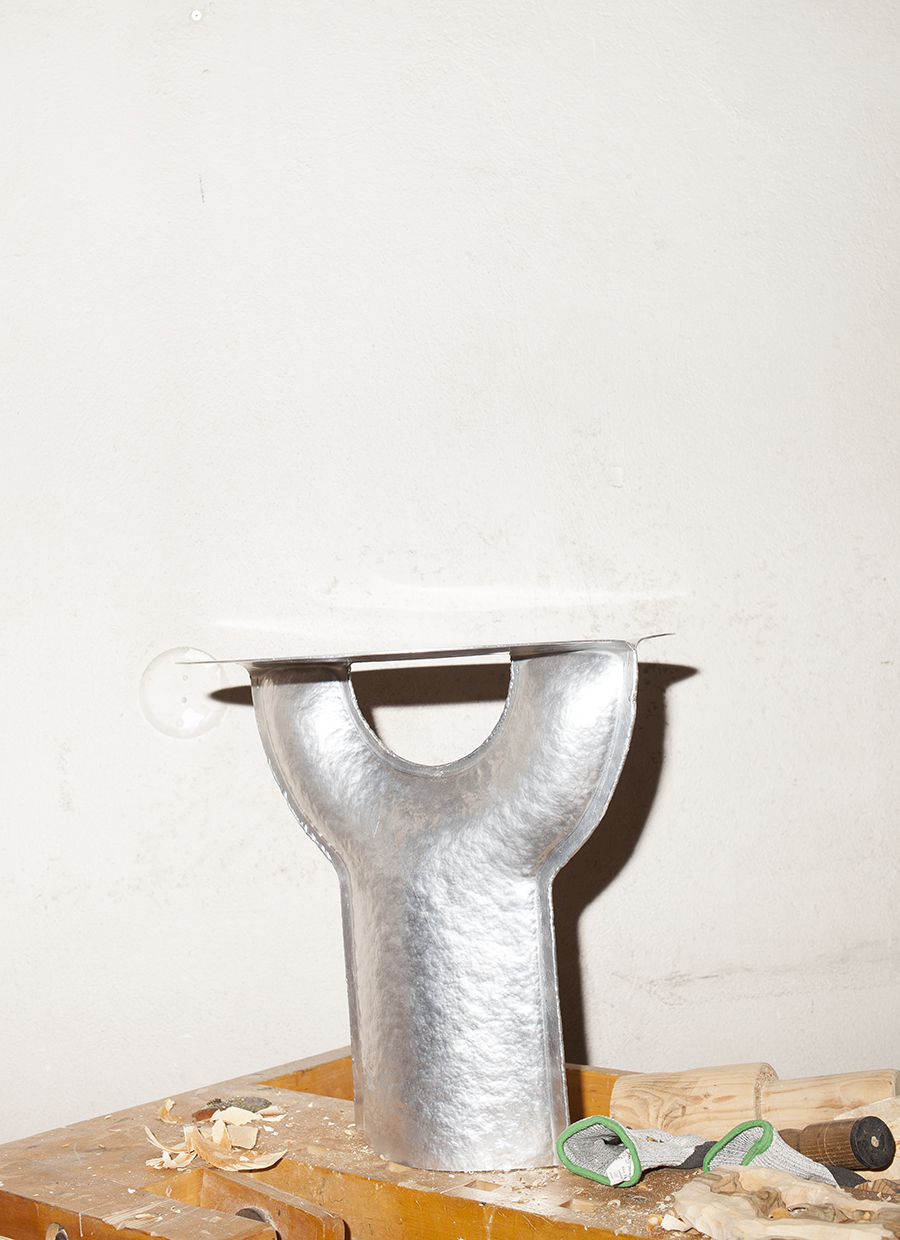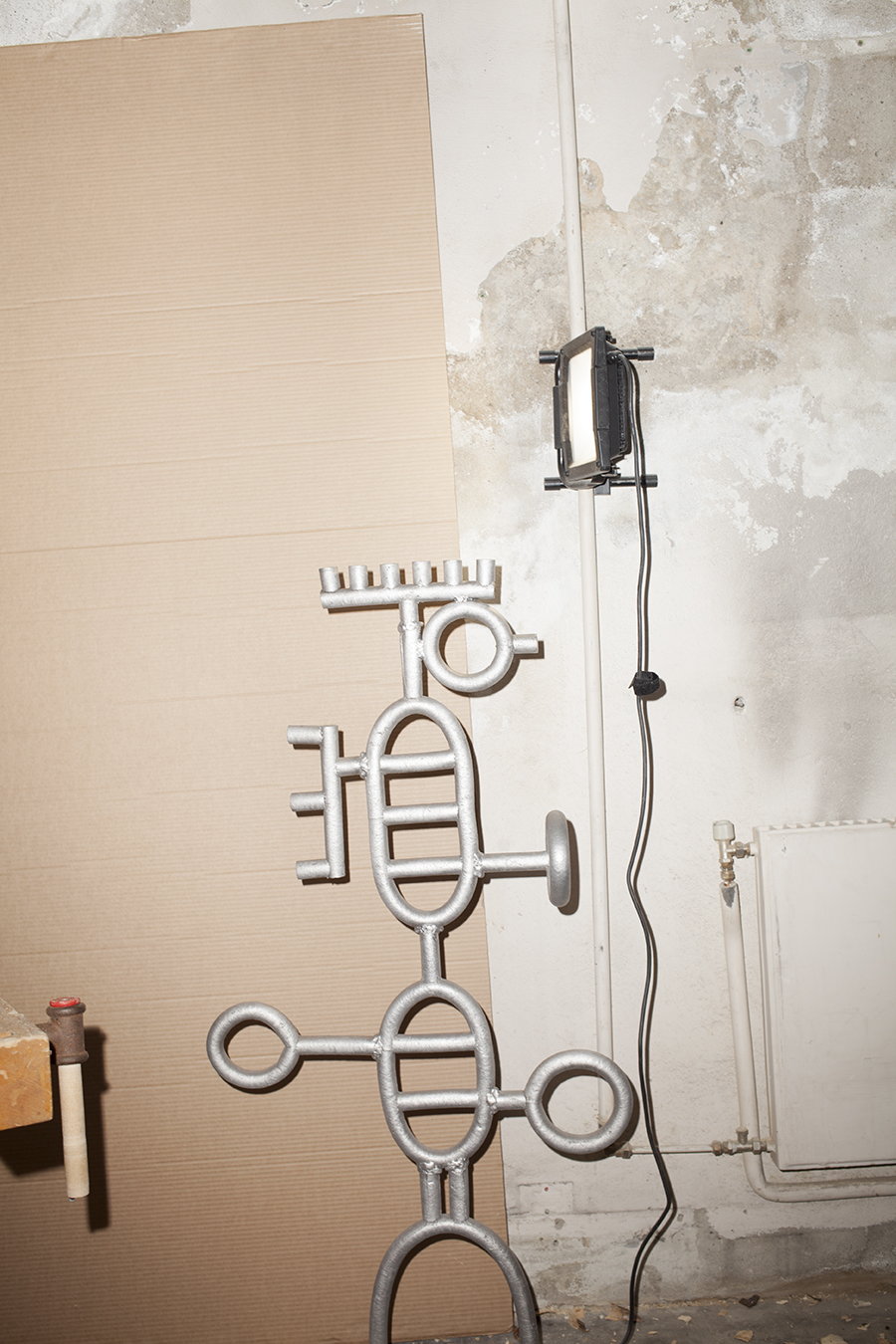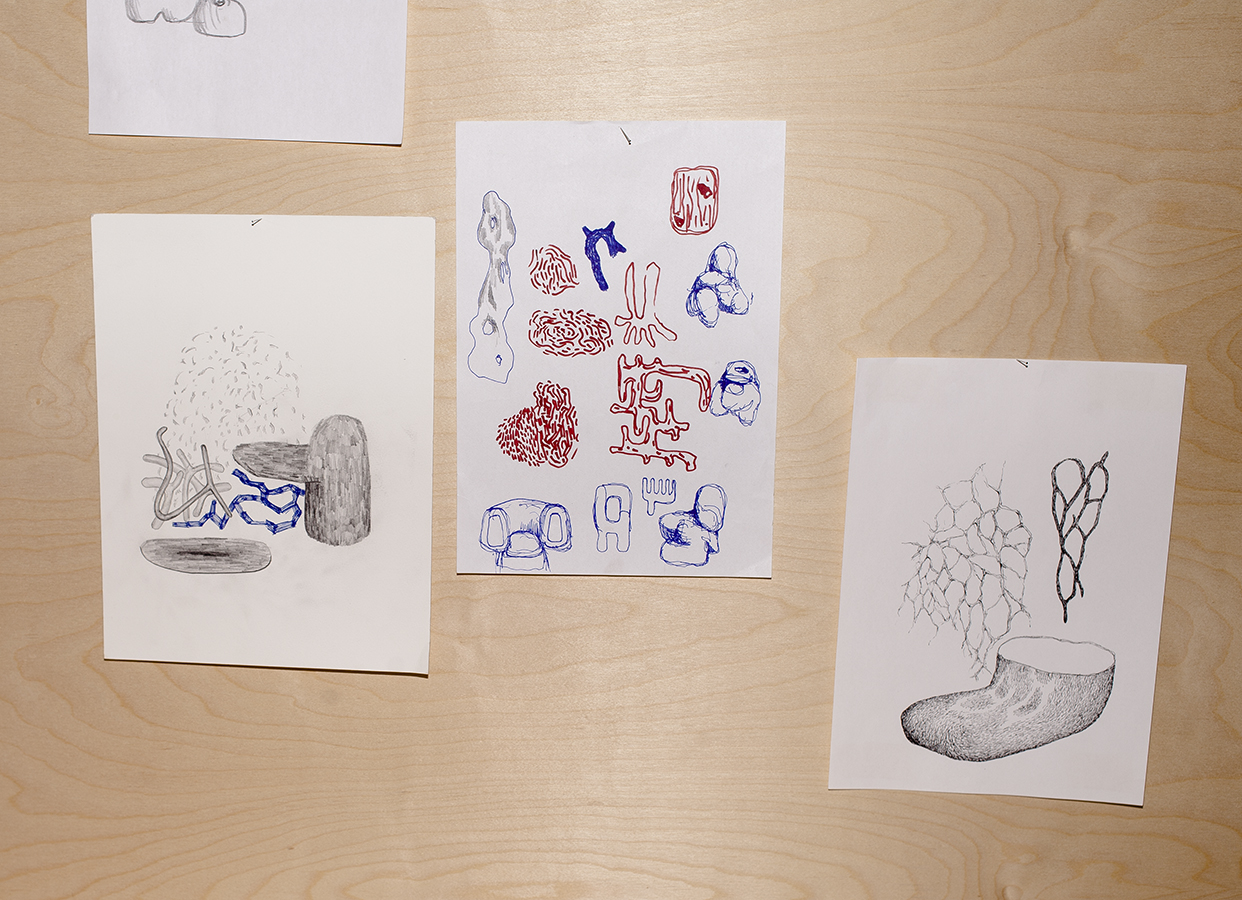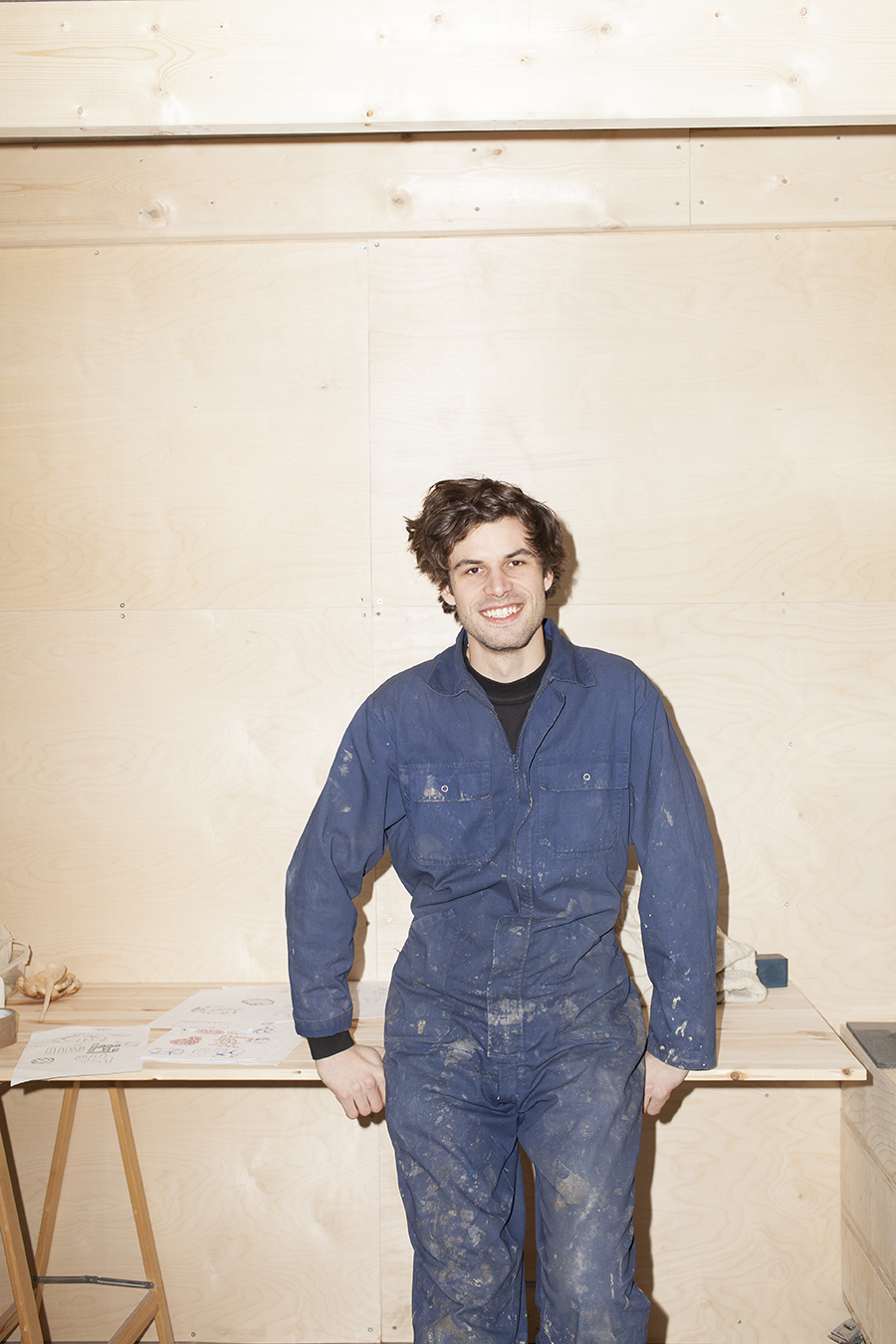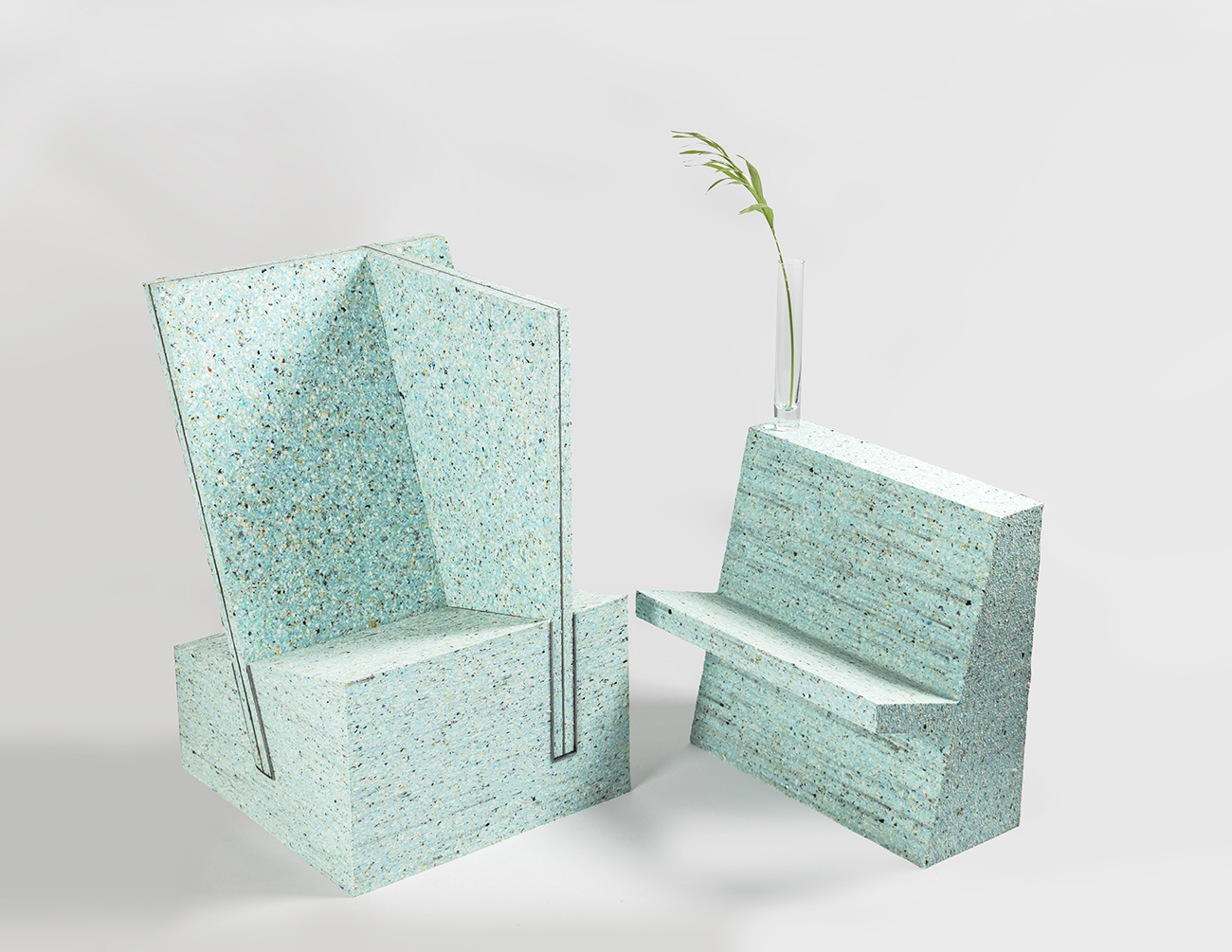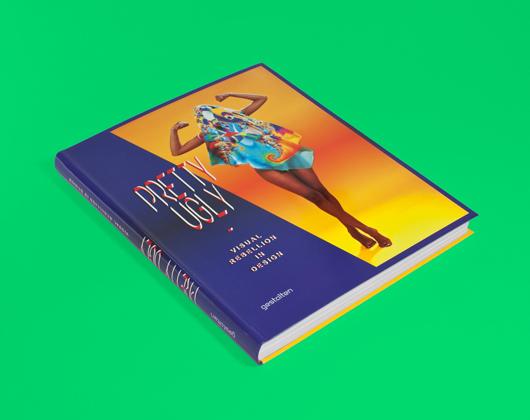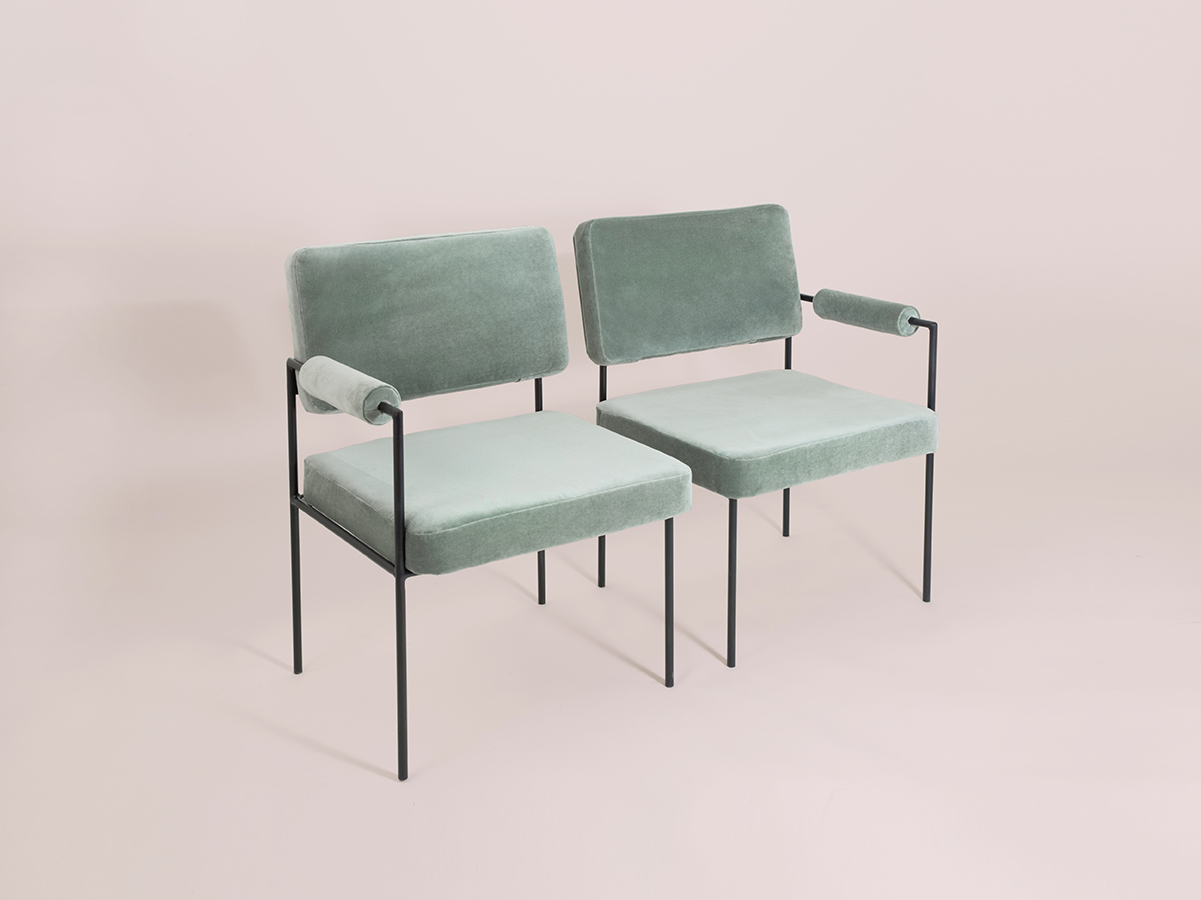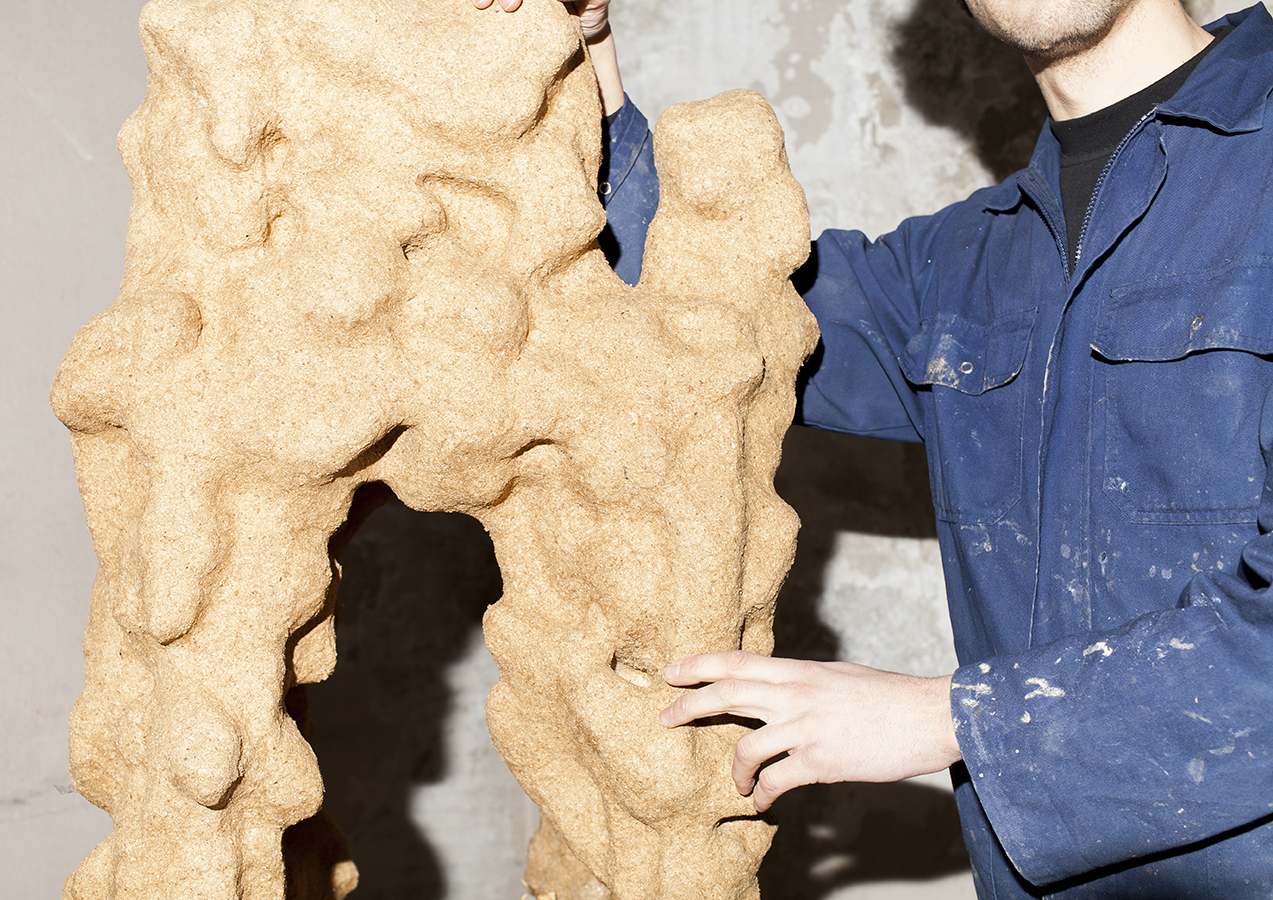
06.25.18
Studio Visit
Meet Sigve Knutson, The Rising Star of Norwegian Design
We review enough student work here at Sight Unseen to know that most aspiring designers fall into one of two camps — those for whom design might not be the best career choice, and those in whom we see a spark of future brilliance. But there is a third, more elusive category — a special cadre of designers who seem to emerge from art school fully formed and gallery ready, their degree projects often representing some ingenious made-up process that acts as a bellwether for where the design world is headed. We saw this in the pewter stools Max Lamb cast on a beach for his RCA graduation project in 2006, and again in the thread-wrapping machine Anton Alvarez invented in 2012. But perhaps the most recent designer to fall into this category is the emerging Norwegian talent Sigve Knutson, whose 2016 thesis project from Design Academy Eindhoven was immediately snapped up and developed by Carwan Gallery. Earlier this year, when we called out a certain lumpen aesthetic as one of the top design trends for 2018, Knutson’s work was the primary reason why.
So when our contributing editor Sean Santiago recently went to Oslo to write about and photograph Knutson’s studio for the recent issue of PIN-UP Magazine, we immediately jumped at the chance to feature the designer more in-depth. We’re co-publishing the article here — which covers such topics as how to make a table from packing peanuts and why Knutson considers himself an “amateur” — but go to PIN-UP for the rest of the photos and to, duh, subscribe! It’s one of the only magazines we read.
PHOTOS AND TEXT BY SEAN SANTIAGO
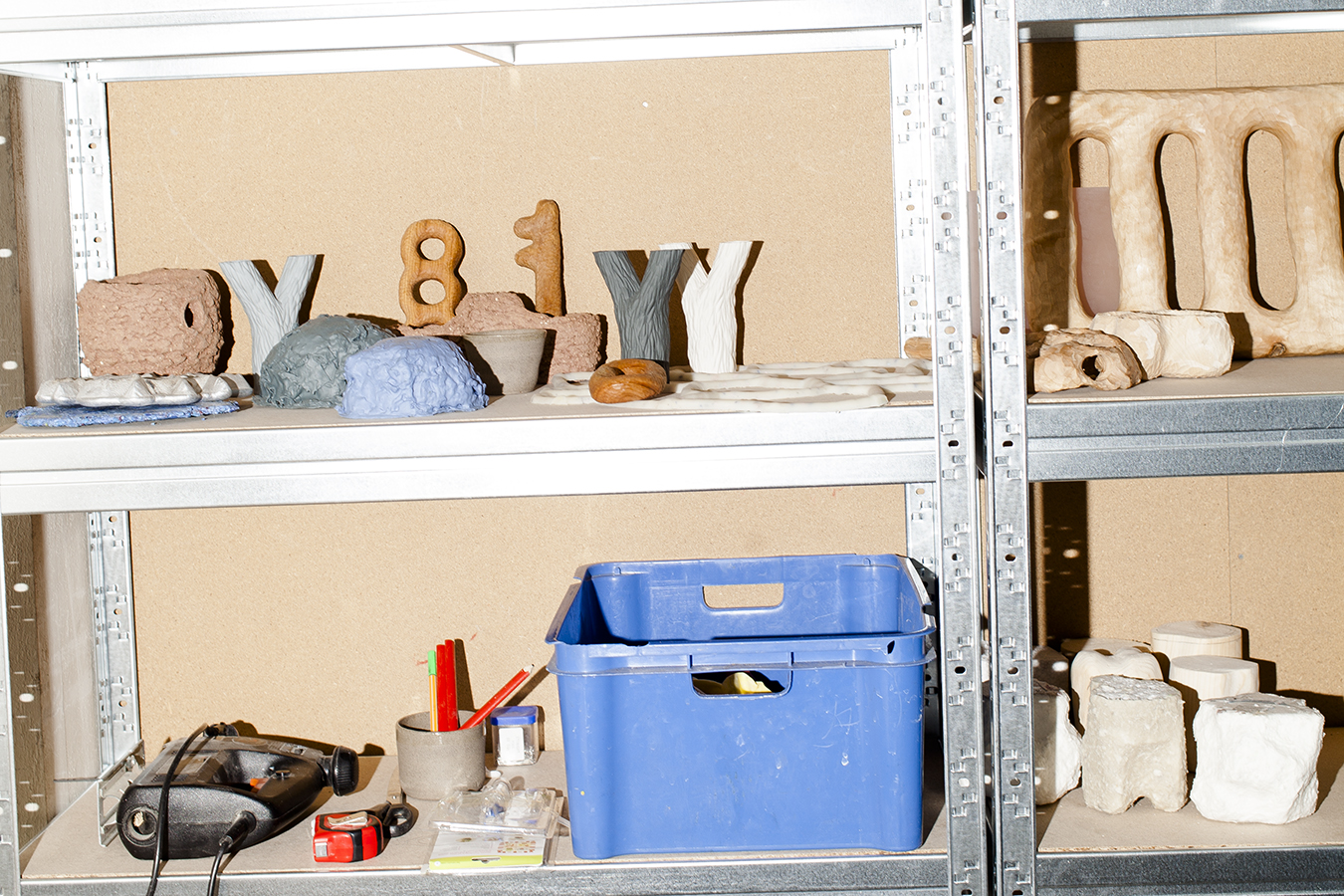
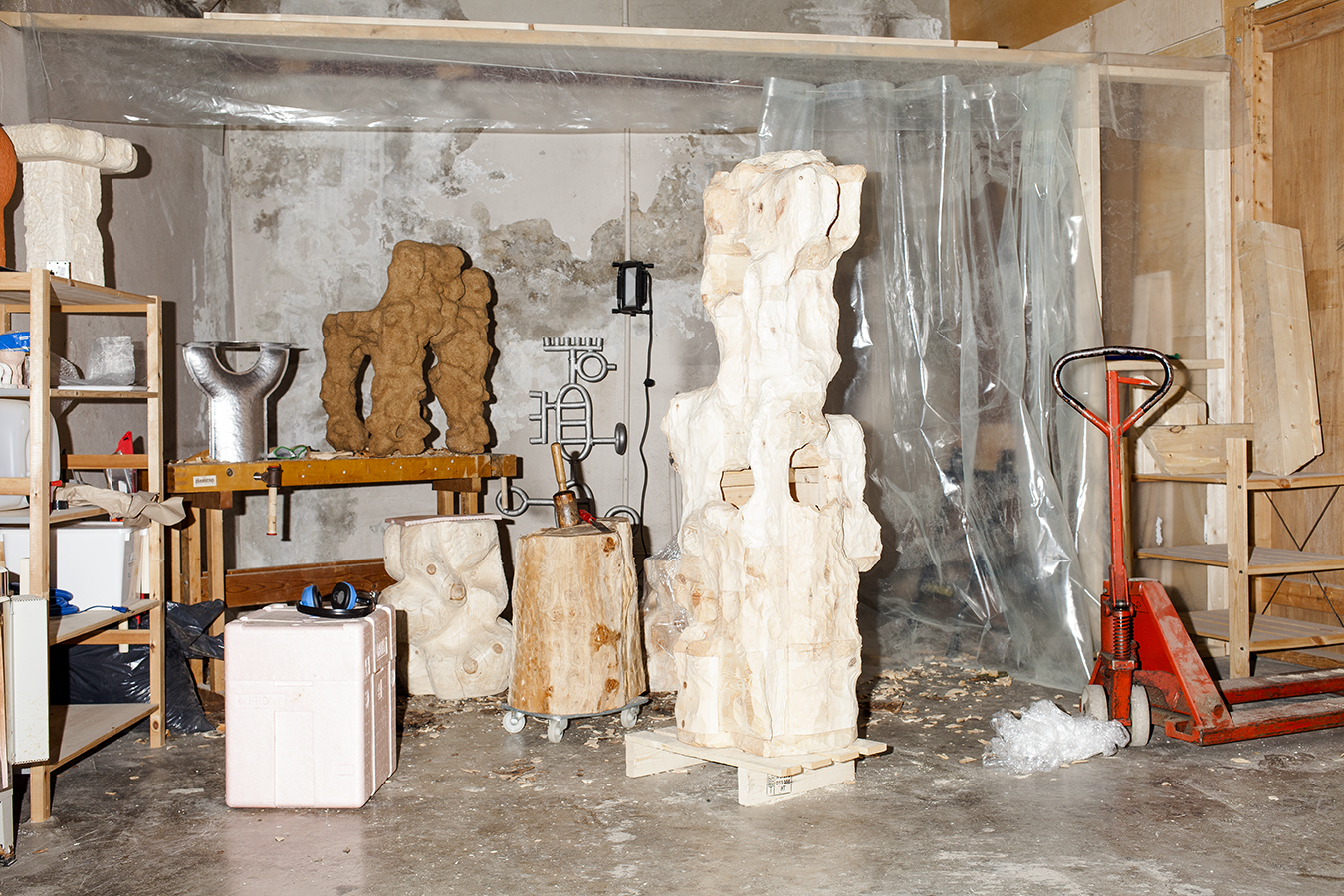
Sigve Knutson is on his phone, eager to show me a clip from the Primitive Technology channel on YouTube, but cell service isn’t good enough inside the Oslo bar where we’re meeting. He describes the video to me instead: a lone man in the woods, “trying to make iron out of fire,” as I write down in my notes, or something like that — some process that would make sense to a person who knows anything about fire, iron, or the earth. I am not that person. Luckily, Knutson’s point is not the end result but the steps the man takes to get there — process for process’s sake. It’s a fitting introduction to the way Knutson considers his own practice, and his own process. He tosses around the words “amateur” and “primitive” with abandon. A graduate of Design Academy Eindhoven, the 27-year-old Norwegian has risen to prominence in recent years for a body of work that straddles the worlds of craft, design, and art, often blurring or blending the boundaries between disciplines until intention becomes a moot point. In the Netherlands he found the freedom to think of himself as a designer; in Norway his output is defined more narrowly as craft. Other people’s pragmatism belies his childlike approach and the sense of wonder with which he approaches raw materials.
Each piece begins life as a drawing, not to be confused with anything resembling a schematic. Knutson’s sketches are almost anthropomorphic, each piece unwittingly born into objecthood through its maker’s alchemical processes. Collectively, the drawings speak to the poetic side of object making, but also tie Knutson to a primal, more simplistic past. “I just try to make objects with as few steps as possible,” he says. “It’s about making intuitively — I’m looking for these surprises in a way, maybe surprising myself more than others.” The drawings, then, are a communicative through-line, helpful as both an archival resource and a curatorial reference. “There are some shapes I obsess over,” he admits, poring over his own work. “Actually I never did anything with this shape… I should revisit it,” he muses.
Whether he’s creating a “table” out of cornstarch packing peanuts (they stick together with water; the phone signal now working, Knutson shows me a Hyperlapse video of this technique on his Instagram), or gluing pieces of wood together to create sculptural shapes entirely without jointing, Knutson’s techniques confront our preconceived notions of completion, forcing the viewer to question if a thing is ever really ready, or finished, or done. “It takes away a lot of the pressure if people feel more free to comment on the piece, to give feedback,” he says. “There are enough people striving for perfection in their object making. I know that I’m not capable of that, which is sort of liberating,” he explains. “I prefer, since I’m an amateur, if the audience sees me as an amateur as well.”
